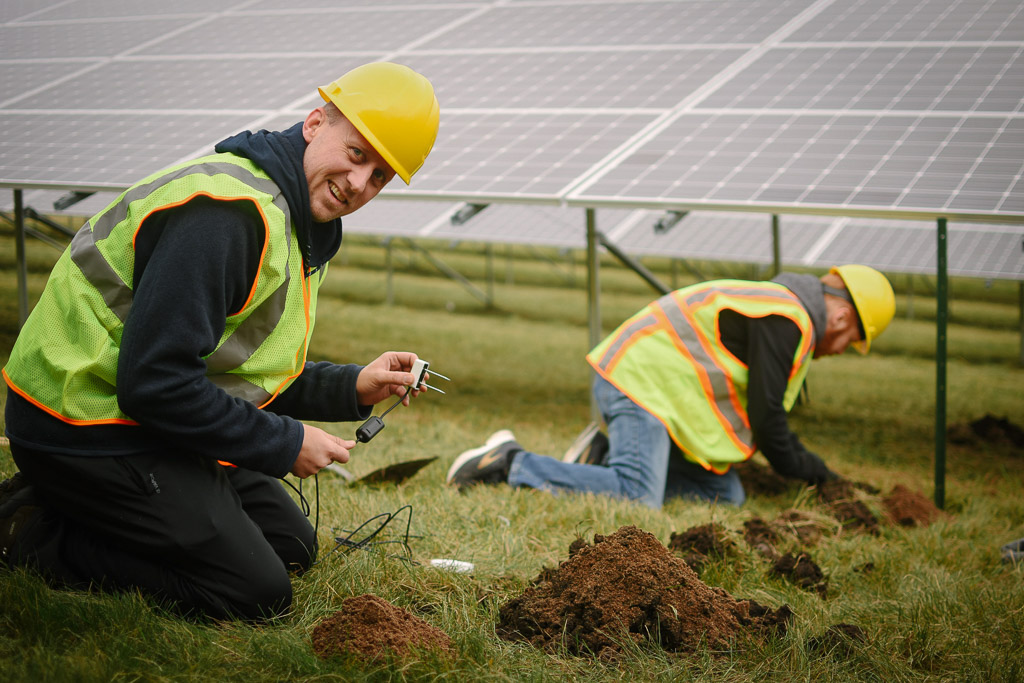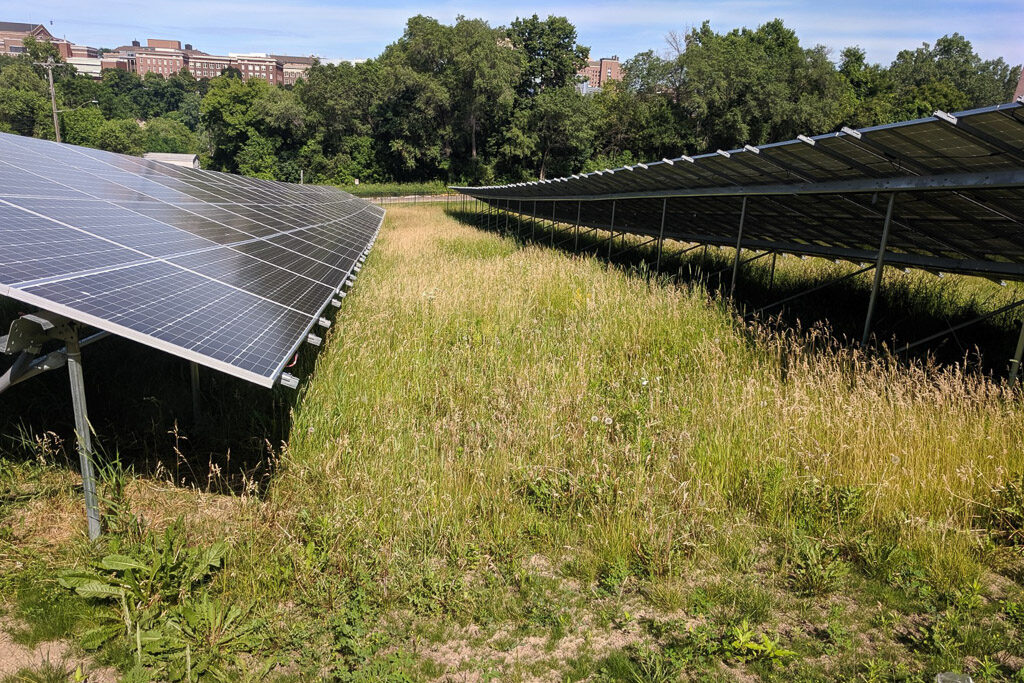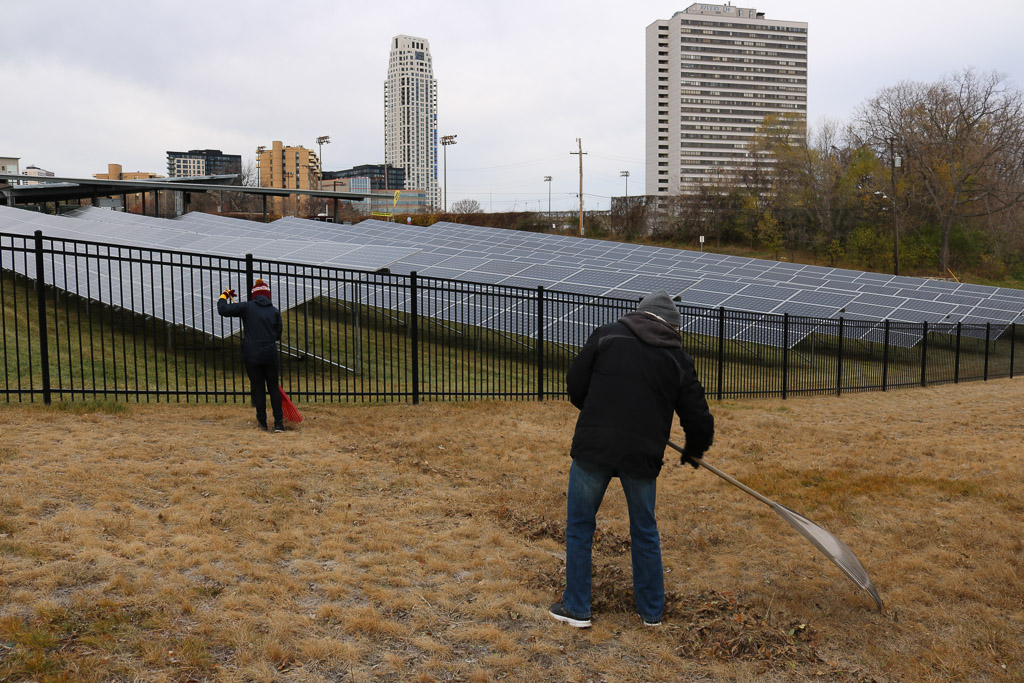Regenerative Ground Cover for UMN Solar Array
Creating habitat for pollinator and insect species around solar panels while monitoring water capture improvements.
Project Details
City: Minneapolis
Type: Community Grant
Status: Completed
Timeline: 2021–22
MWMO Funding: $4,878
Partners: UMN Institute on the Environment; Minnesota Native Landscapes; UMN Facilities Management; UMN Office of Sustainability; UMN Research Experiences for Undergraduates; Additional support from UMN Bee Lab, UMN Sheep Research, and UMN Department of Soil, Water, and Climate
Adam Flett
Communications and Outreach Specialist
612-746-4988
Email Adam Flett
View Bio
The University of Minnesota’s Institute on the Environment led interdisciplinary efforts to create habitat for pollinators around a solar array near the Elmer L. Andersen Library on the University’s West Bank campus. An MWMO Community Grant supported establishing native vegetation, installing soil-moisture sensors, and incorporating engagement strategies within the University community. Beyond its ecological benefits, the project provides a model of regenerative design for education and research, serving as a living laboratory for years to come.
Regenerative design is a concept that seeks to go beyond sustainability in restoring places that positively impact the human and natural environment. Seeking ways to stack benefits in a single location is a difficult task that requires innovative approaches and a variety of best practices across disciplines. The project incorporated native species that reduce soil erosion and runoff toward the Mississippi River, feed and house insects, and potentially provide food to the sheep who might be used to regulate the height of grasses while also contributing to the soil quality. This design may even have a positive impact on the energy efficiency of the solar power production by reducing the ambient air temperature of the site. The location is a uniquely accessible site; it is uncommon to see ground-mounted solar arrays in urban environments, and this site provides access to a site design more commonly found in rural areas.
Before establishing the new plantings, existing turfgrass and invasive plants were removed. A custom seed mix was selected for plant growth heights that limit shade from casting onto the solar panels, yet also provide food for pollinators, and improved stormwater runoff mitigation. Establishment of the site vegetation took place over the summer 2021, with follow-up maintenance in 2022. The project was also supported by the UMN Bee Lab and entomology professors, and the UMN Sheep Research team, which has expressed support for grazing their sheep as part of the site maintenance plan.
The Institute on the Environment sees this as a convergence point for interdisciplinary learning. The highly visible site is used to showcase co-location practices to classrooms, student groups, and research labs. Students were involved at all stages of site development, and course instructors from connected disciplines and a sustainability-aligned student group use the site for on-campus field trips. The Institute’s Undergraduate Leaders Program students were involved in writing the grant proposal, finding additional match-funding, implementing retrofits, and organizing student group interactions. The Research Experience for Undergraduates (REU) program intends to use the site in their program that introduces undergraduate students to the key elements of research on land and water resources essential to improving management practices, with a focus on Community-Based Research (CBR) and interdisciplinary research teams.



